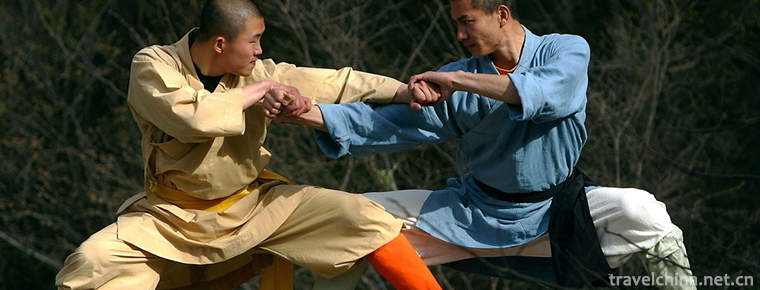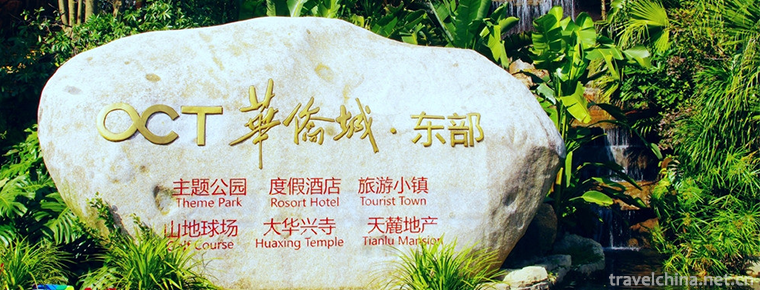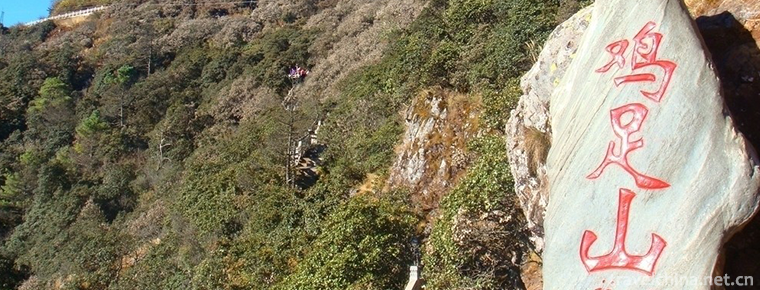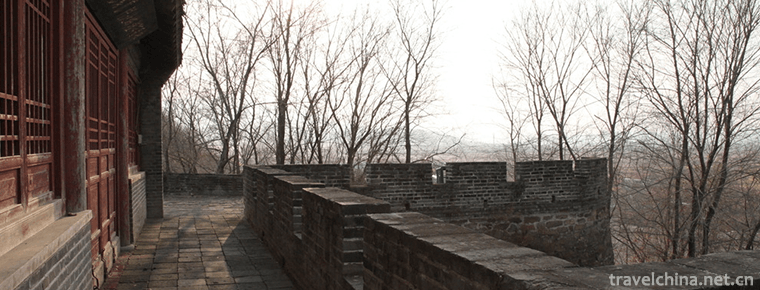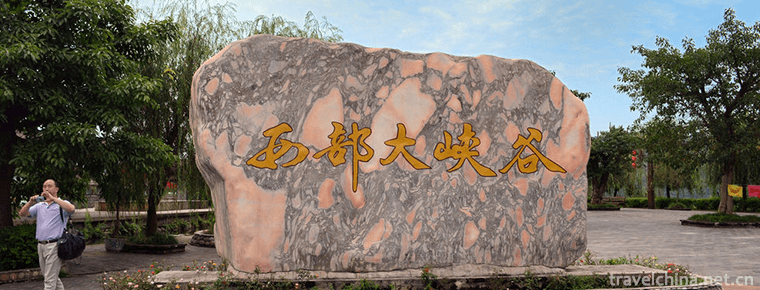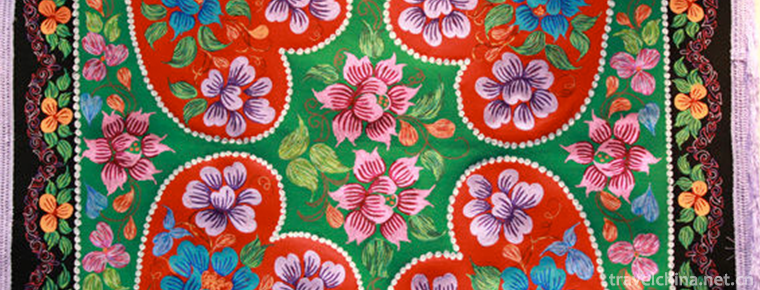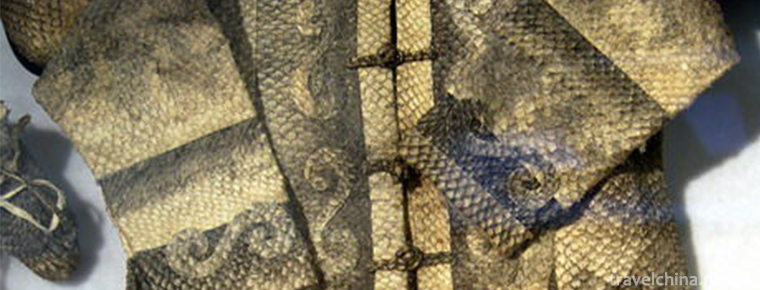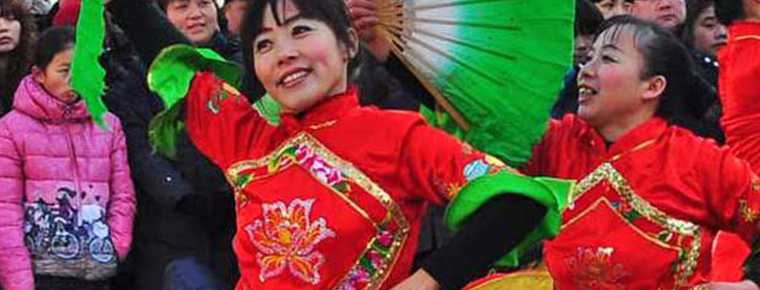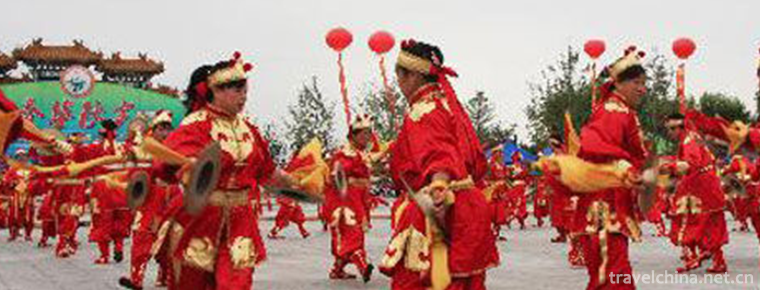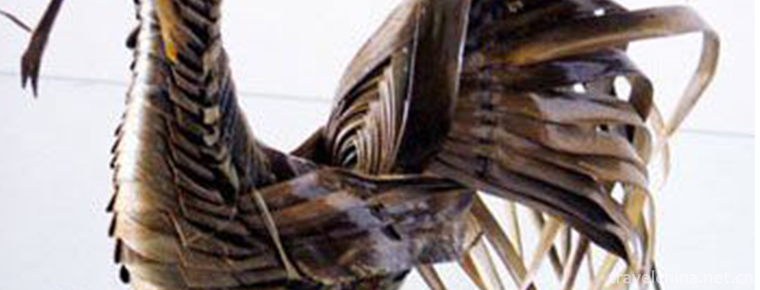Maoling Museum
Maoling Museum
Maoling Museum is located on the Wuling Platform between Xianyang and Xingping in Shaanxi Province, about 40 kilometers away from Xi'an. It is a Museum of Dynastic History of the Western Han Dynasty, famous for Maoling, Huo Qubing Tombs and large stone carvings of Emperor Wudi of the Han Dynasty. There are 2 exhibition rooms for cultural relics, one exhibition for story and statue art of Emperor Wudi of Han Dynasty, and six stone galleries. It covers an area of 121486 square meters. It is famous for its magnificent spirit and heroic style.
Development history
Maoling is the mausoleum of Emperor Liu Che of Han Dynasty, the largest Mausoleum of Emperor Liu Che of Western Han Dynasty. The mausoleum is tall and magnificent, with a square cone in shape. It is known as the "Oriental Pyramid". It is surrounded by more than 20 tombs accompanied by Wei Qing, Huo Qubing, Huo Guang, Jin Ricicada and so on, which are scattered all over the world and are magnificent. Maoling is the mausoleum of Emperor Wu of the Western Han Dynasty. It is the largest Mausoleum of Emperor Wu of the Western Han Dynasty. "Han Shu-Wudi Ji" contains that in the second year of Jianyuan (139 B.C.), "Mao Ling Yi was first built" and Mao Ling was built for 53 years. According to historical records, one third of the annual tax revenue was spent on the construction of mausoleums. Therefore, the mausoleum is grand and grand, with a square pyramid shape, and is known as the "Oriental Pyramid". Emperor Wudi of the Han Dynasty (156-87 B.C.), Mingche, son of King Jingdi, was in office for 54 years. He opened up frontiers and made great achievements in literature and martial arts. He was a very successful emperor in Chinese history. He said to have "Qin Huang, Han Wu, Tang Zong, Song Zu". In the second year of Emperor Wu's reign, Maoling was built, which took 53 years.
Over the years, under the leadership of national model workers, experts with outstanding contributions from the state and curator Wang Zhijie (researcher), the staff of the library have developed the spirit of "hard struggle, selfless dedication, service to tourists and self-improvement" of Maoling sleeping cattle, turning the small cultural management office with only 3600 square meters of area and 20 cultural relics into a famous tourist attraction integrating cultural relics, ancient buildings and gardens. 。 Today, the museum has pleasant garden scenery, imitating the Han Dynasty buildings, pavilions and pavilions, green waves, green pines and cypresses, flowers in three seasons and evergreen in four seasons; the tour is rich in content, "Mao Ling, Linchi Fish Chasing Tourists" and the Millennium Bell Show, listening to the pleasant ancient music, night scenery overflowing, floating bridge fountain charming; enjoy the "Art Exhibition of Imagination of Emperor Wu of Han Dynasty", and imagine the more than 2,000 years. The historical realm of the Western Han Dynasty before last year is impressive. Traveling by sheep pulling cart, horse-drawn bicycle, camel and donkey is interesting and enjoyable. Staff members are enthusiastic, patient, meticulous, civilized and standardized. They give tourists a sense of home and welcome to Maoling by Li Ruihuan, the national leader. Mr. Shi Xueyan, head of the Canadian National Cultural Delegation and professor of the Hong Kong University of Fine Arts, wrote in his message book after visiting the museum: "From Canada to the Maoling Museum in Shaanxi Province, China, we have traveled 10,000 miles by air, train and car. Seeing the achievements of Maoling's work, we feel that it is a worthwhile trip to go another 10,000 miles. This place is not only precious in cultural relics, but also rich in exhibition content and surroundings. It shows the long history of Chinese culture and the great contribution of the working people of China.
Over the past 40 years, the Maoling Museum has expanded from an original area of 3600 square meters to 121 486 square meters. Its building area has grown from 200 square meters to 15805 square meters. Its collection of cultural relics has increased from 20 to more than 4100 pieces and 14 pieces of national treasure. Among them, Fuhu stone carving, unearthed cultural relics such as Golden Horse, Jade Carving Shop, Sishen hollow brick, pottery pipe and so on have been exhibited in the United States, Britain, Japan, France, Korea, Monaco, Hong Kong, Taiwan and other countries and regions, causing a sensation.
architectural composition
The cemetery is square, divided into inner and outer cities, surrounded by walls. The wall is 431 metres long in East and west, 415 metres wide in North and south, and 5.8 metres wide in foundation. There are doors in the middle of all sides. The tomb is bucket-shaped, 46.5 meters high, 231 meters long in East and west, 234 meters long in North and south. According to historical records, Maoling is rich in funerals. The mausoleum contains "gold and silver, black animals, fish and turtles, cattle, horses, leopards and birds, and hundreds and ninety things, all hidden in the mausoleum." After that, the palace maids were placed in the cemetery. Thirty volumes of miscellaneous classics, which were given by the King of Tangqu and read by Emperor Wu before his death, were put into gold boxes and buried with the tomb. By the time Emperor Wu was buried, the burial objects in the tomb had already filled the space of the tomb chamber, and no more burial objects could be accommodated.
The characters buried
occupant of a tomb
In the second year of Emperor Wu's reign (141 A.D.), Emperor Wu Liu Che built the Shouling Tomb here, where he was buried after his death in 87 B.C. Liu Che, Emperor Wudi of the Han Dynasty, was a brilliant feudal emperor who could be compared with Qin Shihuang in history. When he was in office, he was the heyday of the Han Empire. He adopted the grand strategy of rewarding farming, developing production, enriching the country and strengthening the army, and fighting against the Huns. While strengthening the centralization of power politically, he implemented the official-camp system of boiling salt, smelting iron, transportation and trade economically and built water conservancy. Developing agriculture and developing foreign trade; fighting against Huns militarily opened the way to the Western Regions, firmly controlled the Hexi Corridor and went south to Hainan, basically forming the pattern of the living space of the Chinese nation, thus enabling the Han Empire to stand in the east of the world in a unified, prosperous and powerful posture. Maoling mausoleum is a magnificent building with luxurious and rich burial objects. Historically, it is called "money and property, birds, animals, fish and turtles, cattle, tigers, leopards and birds, all the ninety things are hidden away".
Main burial
Burial survey
Mao Tomb is surrounded by accompanying tombs of concubines, palace girls and honorable officials and relatives. Up to now, more than 20 tombs have been sealed, including those of Wei Qing, Huo Guang, Huo Qubing and Jin Ribei. There are many cultural relics found in this area, such as the exquisite sapphire beast face pattern pavement, the mismatched gold and silver moire steel rhinoceros, as well as large hollow bricks and text tiles such as suffruit pattern, dragon pattern and geometric pattern. In 1981, more than 230 precious cultural relics, such as gold, copper horse, silver, bamboo fumigation stove and chain copper heating stove, were unearthed in the burial tomb of Maoling East. They are rare artistic treasures. The peculiarity of Mao Tomb's accompanying tombs and other tombs of Han Dynasty lies in that they all have the meaning of "symbol", such as Madame Li's tomb, Wei Qing's tomb, Huo Qubing's tomb and so on.
Mrs. Lee's tomb
Mrs. Li's tomb, the Queen's burial system, is historically known as the Yingling Tomb. Its tomb is tall, like a millstone, small on top and large on the bottom, with a ring in the middle, commonly known as the Mozi Mausoleum. The Legend of Moziling is a kind and moving folk story. Mrs. Li is so beautiful that she is the most beloved of Emperor Wudi of Han Dynasty. Her face is so beautiful that she died young. Emperor Wudi of the Han Dynasty wrote a long Fu for Madame Li in mourning: "Sorrow, think of the soul!"
Wei Qing tomb
Wei Qing Tomb is the tomb accompanied by Liu Chemao Mausoleum, Emperor Wudi of the Han Dynasty. Located one kilometer northeast of the tomb of Emperor Wudi of Han Dynasty, it is adjacent to Huo Qubing's tomb to the east. The mausoleum is enclosed as a hill with soft lines. "Han Shu Wei Qinghuo's Biography of Going to Disease" contains: "Rising Tombs Like Lushan".
Wei Qing Mausoleum is the largest burial minister in Maoling. It is 113.5 meters long in the east, 90 meters long in the south, 72.6 meters long in the north, 107.2 meters long in the west, 25.5 meters high in the north, 15 meters in the South and 6 meters in the East and west, 25.5 meters high in the top, and covers an area of 8064.55 square meters with a volume of 94412 cubic meters. The northwest corner recesses a part, while the southwest corner protrudes a part, looking like a hill in the distance. The south slope is steep, the north slope is long and gentle, and the middle waist has a platform.
The Tomb of Huo Qubing
Huo Qubing's tomb is like Qilian Mountain. It symbolizes Huo Qubing's great success in Hexi before he died. Stone inscriptions on the tombs are the earliest, most complete and most artistically valuable large stone inscriptions found in China so far. Its sculpture technique is concise, with the help of stone figuration, natural, vivid and vivid, full of vigor and charm, which is regarded as the treasure of human art. It enjoys a high reputation in the world and is always appreciated by artists. Mr. Liu Kaiqu, former chairman and artist of the National Association of Fine Arts, read the message: "Maoling Stone Carving is one of the greatest works of ancient Chinese art, and also the best tradition. We should continue to carry forward it to create new works of art."
Huo Qubing, 17, accompanied General Wei Qingdao on his expedition to fight against the Huns and won many battles. Especially in the Hexi Corridor and the Qilian Mountains, the main force of the Huns swept through the whole area, thus thoroughly opening the Silk Road to the Western Regions. To consolidate and open up the northwest frontier of the Han and Wu Dynasty, we have made brilliant military achievements. Emperor Wu loved talent and treated Huo to be sick and sympathetic with his father and son.
Unfortunately, Huo Qubing died young, and Emperor Wudi of Han Dynasty was very sad. He decided to build a tomb for Huo Qubing to praise his immortal merits. A decree of "mound like Qilian Mountain" bustled the commander, designer, craftsman, sculptor and all kinds of skilled craftsmen of Maoling construction site. So within a month, the Qilian Mountain tomb was built, and within a year or two, the statues of giant stones and animals were created and placed on top of the tomb, so that from static to ecological, it really looks like the Qilian Mountain.
Huo Guang tomb
Huo Guang is Huo Qubing's half brother. In the fourth year of the Yuan Dynasty (119 B.C.), he went to the sickness division to fight against the Huns. On his return, he passed through his old home in Hedong County and took his brother Huo Guang to Chang'an. Later, Huo Guang was trusted by Emperor Wu and entrusted with state affairs. He became the only "three generations of ministers" in the Western Han Dynasty. After Huo Guang's death, Emperor Xuan and Empress Dowager visited and were buried on the east side of Maoling with the ceremony of emperor.











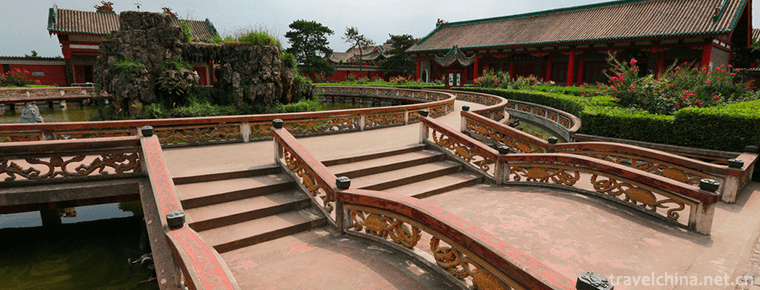
-
Martial Art
Wushu is a technology inherited from ancient military wars. Martial arts can strengthen the body and defend the enemy.
Views: 264 Time 2018-11-13 -
Shenzhen Overseas Chinese Town Tourist Resort
Shenzhen Overseas Chinese Town, located in the Rhododendron Hill of Shenzhen Overseas Chinese Town, is the latest generation of large theme parks built by the Overseas Chinese Town after the splendid .
Views: 135 Time 2018-12-12 -
Jizu Mountain Scenic Spot in Binchuan
Jizu Mountain is located in a cave-making area about 20 kilometers west of Binchuan County, Yunnan Province, 90 kilometers away from Dali City. It is named for its three peaks in the front and a ridge.
Views: 140 Time 2019-01-03 -
The ancient city of Hetuala
The ancient city of Hetuala is located in Yongling Town, Xinbin Manchu Autonomous County, Liaoning Province. It is 5 kilometers west of Qingyongling.
Views: 208 Time 2019-01-13 -
Western Grand Canyon
Western Grand Canyon Hot Spring is a national AAAA-level tourist attraction, located in Shuifu City, Yunnan Province, 32 kilometers away from Yibin City, Sichuan Province.
Views: 121 Time 2019-02-25 -
Kazakh felt embroidery and cloth embroidery
Kazakh folk traditional felt embroidery and cloth embroidery handicraft are mainly spread in Xinjiang Kazakh soft residential areas, such as the Sixth Division Red Banner Farm.
Views: 339 Time 2019-05-02 -
Fish Skin Making Techniques of Hezhe Nationality
Fish skin making techniques of Hezhe nationality, traditional handicraft techniques of Raohe and Fuyuan in Heilongjiang Province, are one of the national intangible cultural heritages..
Views: 159 Time 2019-05-03 -
Jingxing spent
Jinglonglahua, a traditional dance in Jinglongxian County, Hebei Province, is one of the national intangible cultural heritage..
Views: 347 Time 2019-05-08 -
Prince Wuwuwu quarrel
Prince Wujiaozi is one of the unique traditional folk dances in Beijing. It integrates entertainment, fitness and performance. Wujiaozi has a strong style, rough style, relaxation and generosity. Part.
Views: 130 Time 2019-06-18 -
New brown leaf weaving
Xinfang Brown edition is one of the traditional handicraft products in China. It has entered the third batch of national intangible cultural heritage list recommendation project list. It originated in.
Views: 472 Time 2019-08-16 -
Suining secondary industry
In 2019, the city's industrial added value will reach 49.158 billion yuan, an increase of 8.7%, contributing 50.7% to economic growth, and boosting economic growth by 4.1 percentage points. The number of Industrial Enterprises above Designated Size reached 573.
Views: 351 Time 2020-12-16 -
Leshan peoples life
By the end of 2018, the per capita disposable income of rural residents in Leshan City was 15173 yuan, an increase of 8.9%, and the per capita living consumption expenditure was 12309 yuan, an increase of 9.5%. The per capita disposable income of urban residents .
Views: 294 Time 2020-12-17
